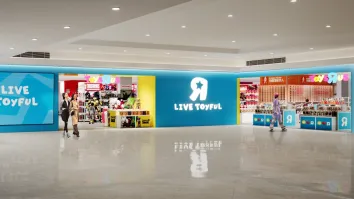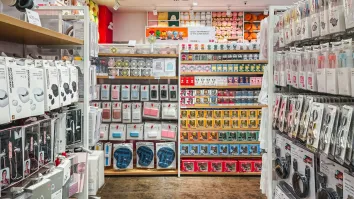
Retail leaders weigh in on riding the e-commerce wave
Over 100 participants attended Retail Asia’s E-commerce Digital Conference.
E-commerce is here to stay as customers shift to new buying preferences. Industry leaders recorded significant growth in online purchasing over the last year, and this will continue to progress as more consumers become more adaptive with buying from non-traditional channels in retail.
Coined as the “now” consumer, purchasing is now driven by buyers who gain access to stores online through content posted on social media, said Tian Bing Zhang, Asia Pacific Consumer Products and Retail Sector Leader for Deloitte. Today, experience is central in driving customer growth.
“Experience is the true reflection of your brand story. You want your brand story to be reflected by each moment throughout the consumer journey, so that people could really feel it. That makes it concrete, and the brand becomes relevant,” he said.
Attendees of Retail Asia’s “E-commerce Digital Conference” held last 21 May 2021 were given early access to Euromonitor International’s “Top 100 Retailers in Asia 2021.”
With consumers spending more time at home and online compared to before the pandemic, brands and e-commerce platforms are using social media to entertain, engage and sell to consumers. According to Euromonitor International Research Analyst for Services & Payments Quan Yao Peh, this includes tools such as live streaming, gamification, and online influencers.
“Retailers and platforms are trying to build more authentic, instead of simply generic and transactional, relationships with their consumers. The pandemic and usage of video calling services has also lowered consumer psychological barriers towards participating in social commerce,” he said.
Among the many trends seen in e-commerce that has helped improve performance in the retail sector is the “buy-now-pay-later” (BNPL) scheme. This payment is attractive to platforms which have customers that are unbanked or prefer to use other methods of paying for their goods, said Atome HK Head of Partnerships Jonathan Cai.
“Buy now pay later usage in APAC is also expected to more than double from 2020 to 2024 from 0.6% of overall ecommerce spend to 1.3%. This is something that is definitely picking up even faster in markets like Singapore. A very similar trend is expected to happen in Hong Kong, where this form of payment is just starting to pick up now but is forecasted to hit 8% by 2024,” Cai said.
Atome VP of Business Development (SG&MY) Bryan Quek added that with the success of the BNPN scheme over the last few months, user growth is seen to grow more than 20% MoM.
“We just launched with Zalora. In Singapore and in Malaysia, they saw a 70% growth in customers since using Atome after the soft launch. We're going to roll out to Hong Kong, Philippines and Indonesia soon, and that's just one of the players,” Quek said.
Riding the digital wave
Carousell Singapore Managing Director Ng Chee Soon said that there is no stopping the move of retail to online. The pandemic brought customers to e-commerce and brick-and-mortar stores will need to hop on this trend if they have not yet.
“In 2020, the e-commerce gross merchandise value (or GMV) in Southeast Asia reached US$62b. It is also projected to grow to US$272b by 2025, that's a whopping 177% growth. While e-commerce has already been on an aggressive growth path, the COVID-19 situation with lockdowns across the region helped to accelerate its adoption and growth,” he said.
“Unfortunately, not everyone is riding the wave. There are winners and losers. According to an article in Mizuho in January of this year, winners tend to have omni channel strategies while losers tend to be those that still haven't quite figured out how to integrate a seamless omni channel strategy,” he added.
Chee Soon said that for new players looking to achieve success, three things must be kept in mind: To make data work for you, know your customers better, and use existing solutions.
“When you're new and trying out a solution, you need to be patient while learning and adjusting to the new technology. We have an example of a 40-year-old watch shop owner who digitalised with the help of Carousell during the Circuit Breaker period,” he narrated.
“The proprietor Mr. Vinson Lee was not I.T. savvy and it was a challenge for him. But with the help of his son-in-law they found success, reaching a far wider audience and getting more business even on Sundays and nights when their physical stores are closed.”
Rethinking customer engagement
“The more personalised interaction you can give to your customer, the better the loyalty they can commit,” said Vivien Ang, Regional Manager APAC, Infobip.
“We can see that 20% of the consumers actually switch brands because they feel that there's a better quality of communication between them and the merchants. Here, 51% believe that communication is a lot more important,” she said.
Vivien said that great customer engagement equates to great customer experiences.
“When a customer has a great experience with your brand, they are likely to become a loyal customer. From onboarding, we make them feel welcome and we engage with them. At the same time, our platform helps you retain the customer by strengthening the relationship through consistent well-timed communication,” she said.
“The process looks relatively simple, but as a brand's customer base grows, you'll find that it's actually quite hard to keep up. Because of this, we need to deploy technologies that can help you solve these challenges,” she added.
By turning a mechanical approach into human connections, Vivien said that the process goes beyond addressing customers by their names. It also helps to collect data and build a profile of the customer, understanding what their needs are and what are their wants.
“At the same time, we do event trigger automation, and this helps to improve the timing of your communication by setting up automated responses. We use it for activities such as signups and purchases,” she said.
With the fast-changing customer behavior, new ways must be adapted by retail. Vivien said that one of these is by using images and other similar tools to attract customers and to compete with other apps or features.
“Omni-channel communication has taken the market by storm recently today, customers are on many platforms. Brands need to be able to reach customers via channels customers prefer and more likely to use,” she concluded.



















 Advertise
Advertise








